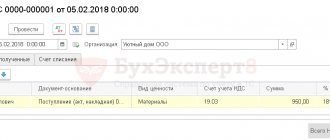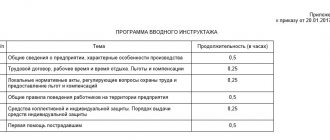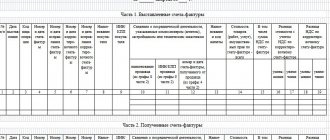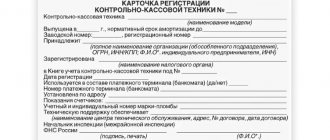Features of a business trip in 2021
The main features of labor relations related to employee travel in 2021 can be considered:
- No need for travel certificates.
- Indirect regulation by the Tax Code of the Russian Federation of the amount of daily payments to a posted employee.
- Legislative regulation of daily allowances during a one-day business trip abroad.
- The ability to document an employee’s expenses for fuel in cases of going on a business trip by personal transport, based on the data of his report.
The main legal document regulating business trips is Decree of the Government of the Russian Federation No. 1595, as amended in 2015. For 2021, this Resolution provides for no need to issue travel certificates. At the same time, the resolution relieves the employer of the obligation to issue official assignments to persons sent on a business trip.
There are no restrictions on daily allowance. However, Art. 217 of the Tax Code of the Russian Federation provides for exemption from taxation of amounts received as daily allowance in the amount of:
- Up to 700 rubles for each day you are on a business trip in the Russian Federation.
- Up to 2,500 rubles for each day you are on a business trip outside the country.
For one-day business trips abroad, daily allowances are paid in the amount of 50% of the amount regulated by Article 168 of the Labor Code. It is important when exactly the employee returned. If the return took place, even within 24 hours, but on the calendar date following the day of departure, payment of the daily allowance is made in the amount of 100%.
In cases of going on a business trip using the personal transport of the business traveler, in the absence of receipts for the purchase of fuel, the employer has the right to pay expenses based on the data provided in the report of the business traveler. The payment of expenses in this case, although they are not justified by documents, will be accountingly legal.
Can any business trip be considered a business trip?
Not every business trip can be recognized as a business trip
The foundations of state regulation in the field of business trips are laid by the Labor Code - Art. Art. 166–168 contain the main features of a business trip, guarantee the employee the preservation of basic labor benefits, and regulate the main points of payment of expenses. In addition, the rules limiting the circle of persons in respect of whom secondment may be “forced” or even possible are contained in a separate section of the Labor Code - the twelfth (Articles 259, 268). The secondment procedure is described in more detail in Government Decree 749 of October 13, 2008.
So, a business trip is a business trip for an employee. However, not every business trip can be called this term. For example, it would be absolutely contrary to common sense to send an intercity bus driver on a daily business trip, whose work initially involves “cruising” between several populated areas. In the same way, it makes no sense to send an employee to a neighboring street to resolve official issues in another organization. And it would be completely illegal to send an employee to another city during working hours to carry out personal assignments for the manager.
Nevertheless, the law provides absolutely clear criteria for determining a business trip:
- The seconded person must have an employment relationship with the employer (for those working under a civil law agreement, the concept of “business trip” does not exist).
- Departure is carried out by order of the employer (as a general rule - without taking into account the opinion of the employee).
- The purpose of the trip is to perform some official task.
- The departure takes place outside the locality in which the business traveler’s place of work is located.
Place of work
The key concept for business trips is the place of work
A point that raises many questions in the practice of business trips is the determination of the place of work of the business traveler. At first glance, everything is simple - the place of work is easy to establish, literally reducing it to the building of the organization where the workplace is located. Difficulties often arise when an employee:
- permanently works in a branch, and not in the parent organization - in this case, the place of work is the branch, but this condition must be reflected in the employment agreement with the employee (clause 3 of Resolution 749) - the trip is a business trip;
- works in the parent company, and is sent to a branch; in other words, his trip should take place within the same organization, but in different localities. In this case, the territorial attribute is decisive, and the trip will be considered a business trip;
- lives and sets off on a trip from a location other than the one where the permanent place of work is located - in this case, the business trip is still issued, but travel and daily allowances are not paid as a general rule (otherwise can be established by agreement with the management).
Example 1. An LLC employee, citizen Barankin, is registered and lives in the locality N, and works in the locality D, where the LLC branch is located. The company's head office is located in N. The employment agreement with Barankin states that his permanent place of work is a branch. The branch management decided to send Barankin to the head office of the LLC (settlement N, where Barankin lives). The head of the branch must properly formalize Barankin’s business trip - issue an order and issue a certificate. In this case, Barankin’s transportation expenses will not be paid, since he will not be able to present travel documents for traveling from point D to point H and back, and daily allowances will not be paid in accordance with paragraph 11 of Resolution 749 (the employee can freely return home after a working day business trip).
An interesting point is the secondment of remote and home-based workers to the office of the employing company. If we interpret the law literally, their place of work, by definition, is outside the company. If such an employee lives in another locality, he must be sent on a business trip. The hiring company itself issues the certificate, and it also records the arrival and departure from the destination. Travel allowances for such employees are paid in the usual manner.
Traveling work
The traveling nature of the work does not involve business trips
Some categories of professions (drivers, sellers of mobile retail outlets, etc.) presuppose daily travel of the employee between populated areas. The basic working conditions of the above-mentioned professions already take into account those incentives and guarantees that are provided for by the rules on business trips (they may be given an appropriate salary supplement). On the other hand, in order to be sent on a trip due to the traveling nature of the work, there is no need to check whether the employee has any restrictions on business trips. The law directly indicates the inadmissibility of business trips for such workers, as well as for those who work on a rotational basis.
The provision regarding the traveling nature of the work is necessarily included in the employment agreement. The categories of enterprise employees who may be subject to such a regime are determined by the collective agreement, other legal regulations, and industry documents.
Expenses associated with travel and accommodation are compensated by the employer in accordance with Art. 168.1 of the Labor Code either on the basis of supporting documents, or by establishing a salary increase.
Documents after the end of the trip
For financial reporting of his expenses and for further preparation of an advance report, the travel employee must provide the following set of documents:
- Official confirmation of living expenses;
Among them is an agreement with the hotel, an invoice or cashier's check issued and paid, it must bear a company seal, the details of the host party and the personal data of the guests must be included. When renting an apartment, you must provide a certificate of services performed, a lease agreement, and a receipt. An invoice and contract are usually provided for office space.
- Transport documents (tickets, receipts, travel passes, gas station receipts);
- Cash receipts for meals and purchases of necessary goods;
- Documentary evidence in the form of receipts for other expenses (communications and Internet, currency exchange, for example).
The organization will not pay for entertainment expenses, for example, services in cafes and restaurants, spa services, swimming pools. All expenses must be documented, and the paperwork must comply with the standards established by law.
After an employee returns from a business trip, he needs to confirm that all assigned tasks have been completed in full. Otherwise, he may be fired from his place of work, citing various reasons - from absenteeism to inadequacy for the position held.
The following may serve as supporting documents:
- Certificate of participation in any event of a training nature;
- Documents confirming training, including a schedule of activities carried out and their clear plan;
- Diploma or papers on advanced training.
Many employers request a written report from the employee, where he sets out in free form the features of the skills and knowledge acquired during the trip. Often he needs such information for further work in the organization.
There are time limits; this package of documents must be submitted no later than 7 days from the date of arrival.
If an employee does not provide official evidence of travel expenses, the accounting department may refuse to pay compensation payments. All cash costs are entered into the database and displayed in accounting reports (monthly and annual). Any documents related to monetary expenses are filled out either on official letterhead or on simple ones, but with the obligatory indication of the details of the company where a particular employee works.
Business trip arrangements
Arranging for a business trip involves drawing up a lot of documents
Despite the fact that business trips are only a small and insignificant part of personnel work, their preparation includes several stages at once. And each of these stages presupposes that the personnel officer and accountant have knowledge of many nuances of the law.
The company may establish additional guarantees and travel conditions for its employees if they do not contradict the current law. To do this, it is necessary to develop and approve a local legal regulation - a regulation on business trips.
Registration of a one-day and multi-day business trip is no different, only the procedure for paying expenses differs.
Stage one: preparation and planning
An employee involved in arranging business trips for a company should be aware that not every worker can be sent on a business trip. At the same time, norms with legislative restrictions are “scattered” throughout the Labor Code.
Only if the event is approved by the employee himself are sent:
- mothers of children under three years of age (Article 259);
- single mothers and fathers who have a child under five years old (Article 259);
- workers who have a disabled child (Article 259);
- workers who, for medical reasons, are caring for a sick relative (Article 259);
- fathers raising a child without a mother (Art. 259);
- guardians and trustees of children (Article 264).
There is absolutely no opportunity to go on a business trip (even if the employee really wants it):
- expectant mother (Article 259);
- an employee who has not reached the age of majority (Article 268);
- employee-student, if the job assignment is not related to training (Article 203).
Having analyzed the employee’s candidacy for compliance with the specified criteria and found among them one of those that require consent to travel, this consent should be requested in advance. To do this, a notification is drawn up for the employee about management’s plans to send him on official duty and his rights. On the notification, the employee must personally express his consent or disagreement. It should be understood that the employee’s disagreement in this case cannot lead to any penalties (be it moral, material or disciplinary).
The employee’s consent to a business trip must be recorded in writing.
On the contrary, refusal to send an employee who does not have the above characteristics may be regarded as a culpable failure to comply with the orders of the manager.
Russian legislation does not contain rules requiring an employee to obtain consent for a long business trip. At the same time, labor standards in some CIS countries do not allow assignment on a business trip for more than, for example, thirty days without the employee’s approval.
Duration of business trip
The labor law does not contain any restrictions regarding the duration of business trips. However, this does not mean that the business trip can be endless. Thus, the duration of the trip is calculated based on the expected duration of the task (its complexity, volume, etc.). If the task is completed and the business trip continues, a transfer takes place, which, due to inconsistency in execution and lack of employee consent, will be considered a violation of the law.
A multi-day business trip, in agreement with management and if appropriate, can be arranged with a daily return. In this case, the employee will be paid for all travel documents, but will not be paid daily allowances.
When calculating the duration of a business trip, it is necessary to remember that travel time is also included in the business trip period. The easiest way to track the exact time is by looking at the departure time on your travel documents. Moreover, if the vehicle is sent from a point located outside the city (airport, river or sea port, etc.), the travel period additionally includes the travel time to this point. The same rules apply to determining the time of arrival (end of a business trip).
Example 2. Employee Rykov goes on a business trip on a plane that departs from an airport located outside the city at 1:30 on November 18. To determine the start day of a business trip, it is necessary to subtract three hours from the departure time (during this time you need to arrive at the airport as a general rule), as well as the travel time to the airport. In order to be at the airport at 22:30, Rykov needs to leave the city on a regular bus departing at 21:00. It is from this time that the business trip begins. This means that the start date of the business trip is November 17.
Second stage: paperwork
The procedure for documenting a business trip begins with the actions of the head of the structural unit where the seconded employee works (if there is no boss, then the employee himself can draw up the primary documents). At this stage two documents must be prepared:
- Memo (application) for a business trip addressed to the head of the company. The document indicates the destination, duration of the trip, purpose of the trip, and the need to provide transport. The manager will review the application and forward it to the HR department for execution.
The memorandum is usually drawn up by the head of the department. - A job assignment for an employee is an indication of a specific place, time, action and other necessary conditions (the document is not mandatory; the responsibility for its preparation can be assigned to the head of the department by local company documents).
Business trip assignment - a guide for the employee, a guideline for his future report
Based on the application for a business trip, the personnel service prepares an order and a travel certificate. Both documents are signed by the head of the organization, and the company’s round seal is placed on the certificate.
The travel order is prepared in accordance with the unified form T-9
Upon returning from a business trip, the employee must draw up a report on the execution of the assignment. However, this document is not required if it is not provided for by the company’s local regulations.
The business trip order must contain all the basic information about the business trip - full name. employee, duration of business trip, destination, purpose of referral, etc.
Travel certificate
A travel certificate is a key document for a business trip. It serves as confirmation of arrival and departure from each business trip point. The first mark - about departure from the sending organization - is affixed when issuing the certificate. The travel certificate is presented at the place of travel along with the passport.
The travel certificate is drawn up in accordance with the unified form T-10
The top part of the certificate must contain:
- its registration number;
- information about the administrative document;
- Full name and position of the traveler;
- destination (or points);
- dates and number of days of business trip.
The travel certificate is signed by the head of the company
Travel sheet is a field of identification specifically designated for marks of arrival/departure. The mark in each organization is made by a specially appointed person; he affixes the seal of the structural unit or organization to his signature.
At each destination, the employee must mark the travel document
All certificates issued by the company are registered in a special journal. The law does not establish a mandatory form for the journal, however, it is recommended to include in each entry the serial (registration) number, full name and position of the traveler, date of issue, order number, signature on receipt of the travel certificate.
The business trip log should contain license numbers and other important information about all business trips issued by the company
Before leaving, the employee has the right to write an application for an advance payment to pay the planned costs. To determine the exact amount, an estimate of planned expenses can be drawn up. Money is issued on account.
In his application for an advance, the employee must indicate the specific amount of money he will need
In the work time sheet, the business trip day is marked as K or 06.
In the timesheet, business trip days are indicated by the signs: K or 06
Third stage: extension of the tour of duty
If, for some reason, the official assignment was not completed during the originally established period of the business trip, or the employer decided to give the employee an additional assignment at the same point, the business trip can be extended. It should be taken into account that for those categories of employees who cannot be sent on a business trip without their consent, a new additional consent must be requested before extension.
Since the duration of a business trip is not limited by law, consent to its extension is not required from most employees (meaning those not in preferential categories).
After obtaining the employee's consent (if required), the employer must issue an order to extend the trip. It is necessary to make appropriate corrections in the travel certificate; if necessary, add space for additional arrival/departure marks to the travel document.
An order to extend a business trip is drawn up in free form
Primary documents
The requirements for primary accounting documentation are determined by Federal Law dated December 6, 2011 No. 402-FZ “On Accounting”. Its design must meet the following standards:
- The forms of primary documents are approved by the head of the organization. The company has the right to use unified forms approved by Resolution of the State Statistics Committee of Russia dated January 5, 2004 No. 1, or develop them independently. Regardless of whether the organization uses unified accounting documents for processing travel expenses or those developed independently, its decision must be consolidated in local regulatory documents approved by the head.
- Travel documents must contain mandatory details of accounting registers. The list of mandatory details is established by Art. 10 of the above-mentioned Federal Law on accounting, which include:
- register name;
- name of the economic entity that compiled the document;
- the start and end date of maintaining the register and/or the period for which the register was compiled;
- chronological and (or) systematic grouping of accounting objects;
- the monetary measurement of accounting objects indicating the unit of measurement;
- names of positions of persons responsible for maintaining the register;
- signatures of the persons responsible for maintaining the register, indicating their surnames and initials or other details necessary to identify these persons.
We have dealt with the forms of primary accounting documents and know how to properly arrange a business trip in 2021. After the employee returns, be sure to properly document the results of the business trip.
Salary and travel expenses
The basic principle of paying for a business trip is that the employer bears all expenses associated with work and accommodation during the trip. Travel compensation in a broad sense consists of the following parts:
- Direct payment. In accordance with Article 167 of the Labor Code, the posted employee retains his average salary. This value is calculated in accordance with Government Decree 922 of December 24, 2007. In this case, those days that are provided for in the work schedule of the organization sending the employee are paid as working days.
- Compensation for travel, accommodation and other needs of which the employer is notified. If an employee goes on a business trip abroad, he will be reimbursed for the costs of obtaining a foreign passport, obtaining visas, etc.
- Per diem - payment of additional costs in case of a multi-day trip. Per diem is calculated in a fixed amount for each business trip day. This amount is determined in the employer’s local regulations, but you will not have to pay taxes on daily allowances not exceeding 700 rubles. per day for trips within the Russian Federation, 2,500 rubles. - for trips abroad.
If an employee is sent on a one-day business trip or a multi-day trip, but with a daily return, there is no need to pay per diem.
Sick leave for an employee who is on a business trip at the time of incapacity for work is paid in the usual manner. At the same time, for all days of sick leave (if all the rules for calculating them are followed), he is paid a daily allowance.
Procedure for payment and recalculation
As noted above, before sending an employee on a business trip, at his request, the employer must issue an advance. Upon returning from the trip, the employee submits an advance report along with documents confirming all expenses to the accounting department. Such documents may be:
- tickets (can be electronic) for travel in accordance with the business trip route (including travel between several destinations), checks for payment for bedding, invoices for travel documentation;
- receipts for payment for hotel rooms, invoices for payment for other housing under rental agreements;
- receipts for payment of services for processing travel documents, etc.
Based on the submitted documents, the accounting department recalculates, additionally accrues what was underpaid or withholds what was overpaid. In general, payment for a business trip occurs along with the calculation of wages for the month in which the trip took place.
The employee has the right to write an application for recalculation of the refund of funds spent on the trip
Is it possible to send an employee on a day off?
Sometimes a trip means that an employee must begin performing duties in a new place on Monday. To do this, he needs to go on a business trip on his day off.
This point must be agreed upon with the employee himself - in order to complete a business trip on a day off, it will be necessary to issue an order that the business trip will begin on a day off, and the employee must give written consent to this. In such an order, it is necessary to indicate the working hours for a given day - this step is necessary in order to eliminate disputes about payment for such days.
For example, if the train leaves several hours before midnight, then the order must indicate that only these hours are subject to payment. Otherwise, the employer will need to compensate the entire day. And this will have to be done either double or single, but with an additional day for rest.






